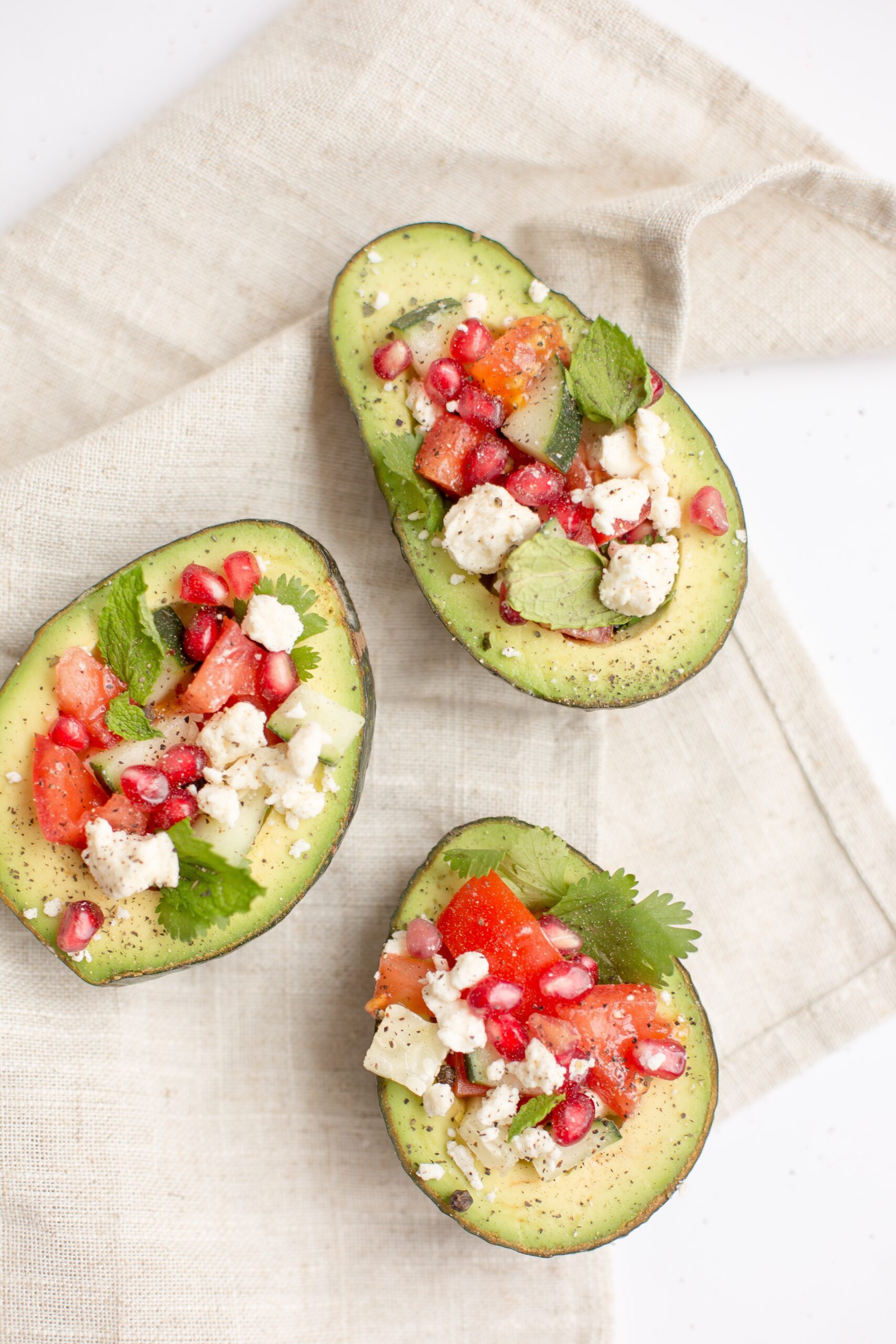
Mindful eating is described in a number of different ways, including when you pay attention while eating, chew thoroughly, or listen to the needs of your body but most important to mindful eating- the practice of mindfulness. I find The Center for Mindful Eating’s (TCME) principles most complete when it comes to understanding what eating mindfully actually is (and is not):
- Allowing yourself to become aware of the positive and nurturing opportunities that are available through food selection and preparation by respecting your own inner wisdom
- Using all your senses in choosing to eat food that is both satisfying to you and nourishing to your body
- Acknowledging responses to food (likes, dislikes, or neutral) without judgment
- Becoming aware of physical hunger and satiety cues to guide your decisions to begin and end eating
It is important to understand that mindful eating is inclusive of all people, regardless of body shape or size, and is not a weight-loss technique.
Respecting Your Own Inner Wisdom
There are many differing opinions out there about “the best” way to eat to be healthy. Beyond the basics of having access to nourishing food, clean water, and safe shelter, our individual needs differ considerably.
Consider how the environment plays a role in what your body may need. Did you have more sun exposure? Perhaps you’ll desire foods higher in antioxidants. Were you active outside in the heat? Maybe you will feel more hungry and desire foods that have a watery or salty taste. Continue to think through all of the ways in which your cultural, religious, or ethical choices, geographic location, food access, health conditions, lifestyle, and so forth are all factors that can influence your unique food choices.
The truth is, our bodies are innately wise, but we have often been conditioned not to trust this inner knowing by experiences such as:
- Being encouraged to eat beyond fullness (clean your plate)
- Eating based on time of day, regardless of hunger or fullness (i.e., breakfast is at 8 am, lunch at noon, and dinner at 5 pm)
- Family and/or societal conditioning
- Parents’ or guardians’ relationship with their bodies and food.
- Experiencing weight and/or size stigma
- Following diet trends, chronic dieting, and food restrictions
- Believing “healthy” food is inherently lacking taste and not enjoyable.
- Believing that experts know better
Hyper-Palatability and Cravings
“Hyper-palatable” foods are usually processed foods that are sweet (naturally or artificially) or salty, and/or contain high amounts of fat that, with repeated exposure, lead to cravings and can disrupt normal signals, causing the cravings to continue beyond the point of fullness. These foods are often experienced as comforting because they can cause the release of hormones that reduce stress.
It is also important to consider additional factors that can lead to cravings, such as self-imposed food restrictions, the gut microbiome, and nutritional deficiencies.
In functional medicine, it is recommended to “clear the muddy water” before it is possible to see the root cause. With mindful eating, the same is likely true. In the beginning, eating mindfully can feel really confusing, and it can be unclear what the sensations you experience actually mean (especially with highly processed foods). However, with continued practice, patience, learning, and kindness towards yourself, and knowing that this is a process, eating with mindfulness can change your relationship with food, your body, and your cravings, and the feedback from your body becomes more clear.
Working with your healthcare team and a trained mindful eating practitioner, especially if you have in the past or currently are experiencing disordered eating, is essential.
Do for Yourself
In 1939, pediatrician Clara Davis shared her data from fifteen children in an orphanage who were allowed to “do for themselves” without any suggestions from adults as to what they should be eating. She provided thirty-three different natural and unrefined food options for them to choose from and she observed that each of the fifteen children selected completely different food combinations each day and each of the children grew into what she described as “uniformly, well-nourished, healthy children.”
The takeaway from this experiment is that we are born with the innate wisdom to adjust our diet according to what our bodies need to avoid deficiency when given a variety of unrefined whole food options to choose from. We’re born with the ability, then, to have a healthy relationship with food.
The Good and the Bad
Food is often described as “bad” or “good,” but there is a trap when categorizing foods in this way. It is easy to infer, then, that the person consuming the food is either good or bad because of the food they choose, which is simply untrue and can lead to feelings of judgment, shame, and guilt.
When incorporating the principles of mindfulness into eating, it is important to let go of categorizing food in this way, instead viewing food with an appreciation for its nourishing qualities and consideration for what your unique body needs.
Often when speaking about mindful eating, I am asked some version of this question: “So this means I could eat ice cream all day if that is what my body told me it wanted?” The answer is yes; however, when practicing mindful eating, you would likely find at some point that you were full or the ice cream was no longer satisfying, or you were no longer feeling well and your body would be giving you signals to stop.
The same is true for any food. If I ate apples all day, at some point I would be full or they would no longer be enjoyable, or I would no longer feel well. Part of eating mindfully is eating in a way that supports your health and makes you feel good. Being fully present for each eating experience without judgment not only makes eating more enjoyable but also helps you to gather feedback for future eating experiences.
If your body tells you what you need is ice cream, then eat it, fully present, savoring the ice cream and appreciating it without guilt until you have satisfied your desire to eat ice cream. I also like to encourage consideration of what else could be coming up with cravings: could your body need love, rest, stress reduction, movement, hydration, or to deal with difficult emotions? Maybe, maybe not, but it’s worth acknowledging that sometimes our cravings are about more than food.
Pleasure and Nutrition
TCME’s position statement on healthy eating includes this sentence:
“The blend of pleasure and nutrition is important for consistency in eating healthfully as well as to optimize digestion, absorption, and metabolism of nutrients.”
Pleasurable foods and health-promoting foods can be one and the same. Every Saturday at our farm market, we see the excitement firsthand that freshly harvested flavorful vegetables bring to our customers and we get to enjoy the photos on social media of the beautiful meals they create.
Health-promoting foods are those that are consistent with individual preferences while providing nutrients that support health. This does not need to be complicated or overly time-consuming. Sometimes the most simple foods are the most pleasurable. Think of a freshly picked sun-warmed tomato or berries eaten while picking. When food is consumed with feelings of shame, guilt, or stress, it will not be optimally utilized by the body—and the reverse is also true: when food is consumed with feelings of pleasure, appreciation, and love, it can be deeply nourishing.
Eating for pleasure as well as for health is a great way to slow down and savor the eating experience while improving digestion. One of my favorite ways to do this is, prior to eating, I think to myself, “What would make this experience just 10% better?” Often it is something simple like making the temperature of the room more comfortable, turning off the tv, turning on music, or making sure I have the seasonings I would like to help the food in front of me taste its best. I then take a few breaths, taking time to feel gratitude for the food, the people who prepared it, and the people who grew it. Next, I make a point to notice the color, texture, and smell of what I am about to eat. At this point, I usually notice my mouth watering and feel ready to begin eating.
Oftentimes pleasure is associated with “bad” (i.e., “sinful” chocolate cake, so good it’s bad), but the true definition of pleasure is a “feeling of happy satisfaction and enjoyment.”
Satisfaction and enjoyment are key to a pleasurable eating experience and to eating mindfully.



